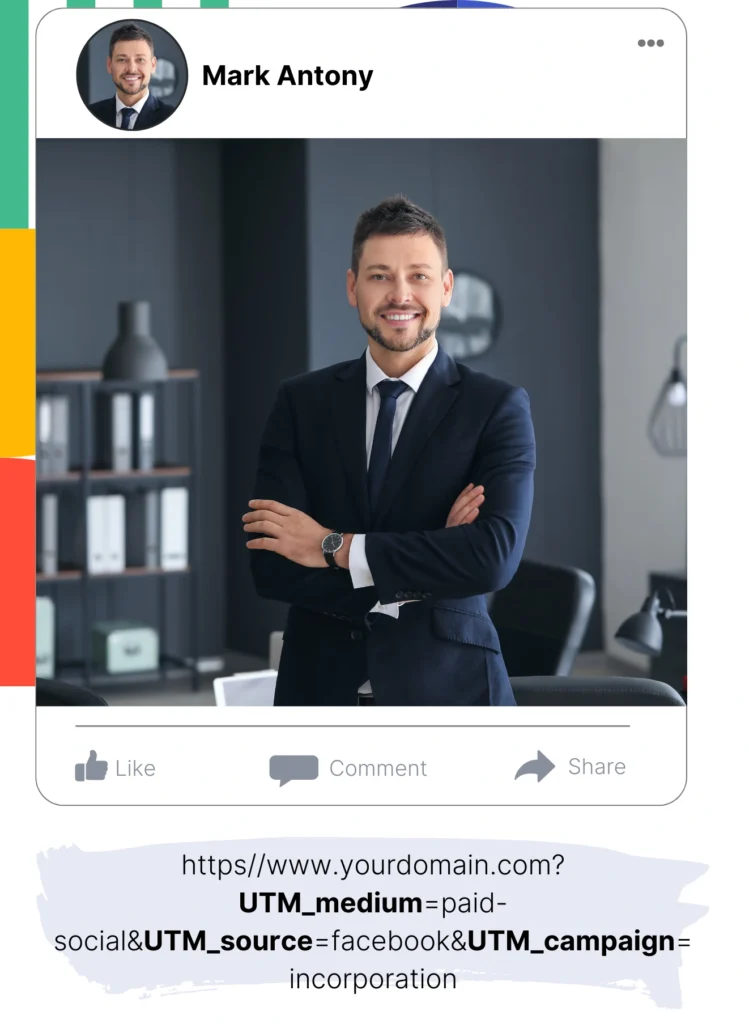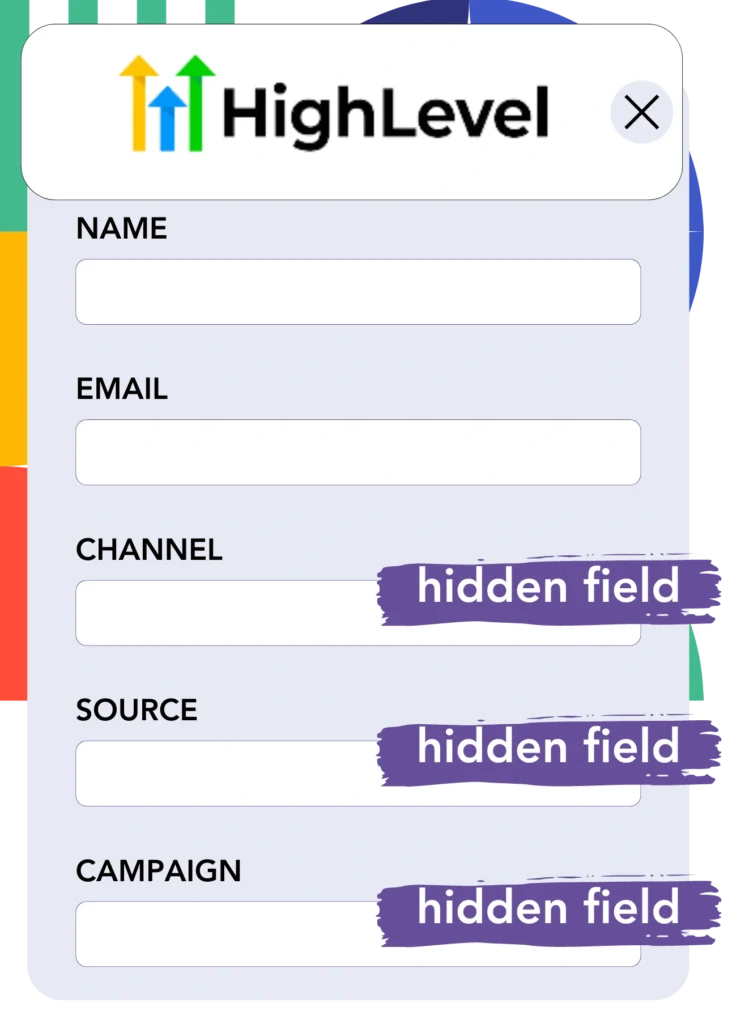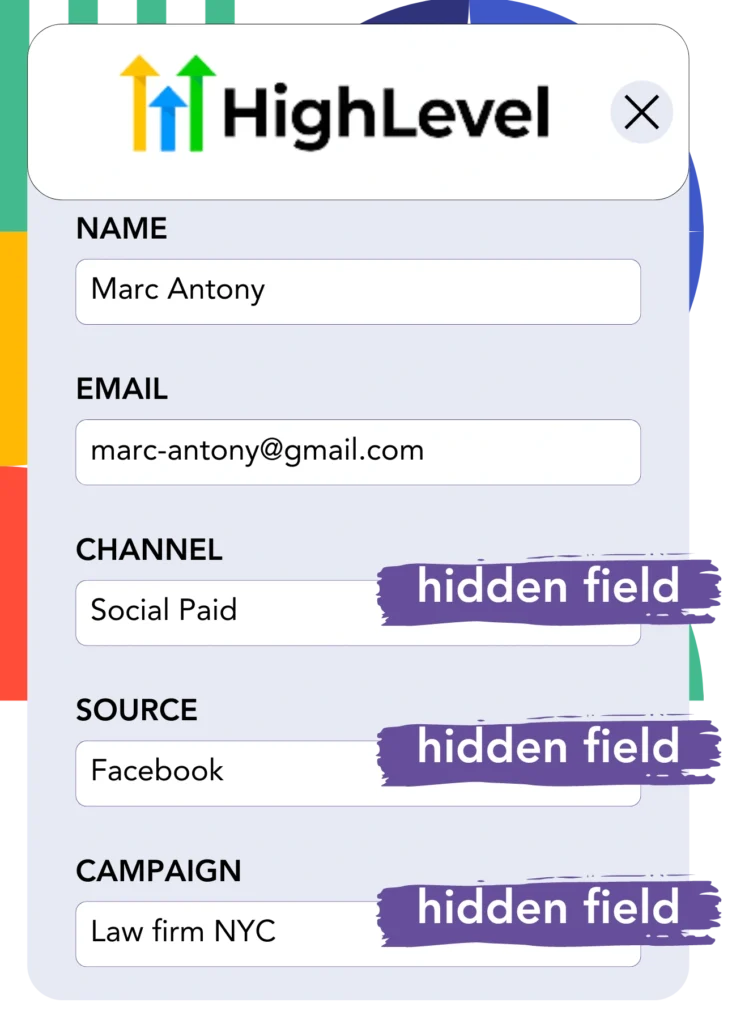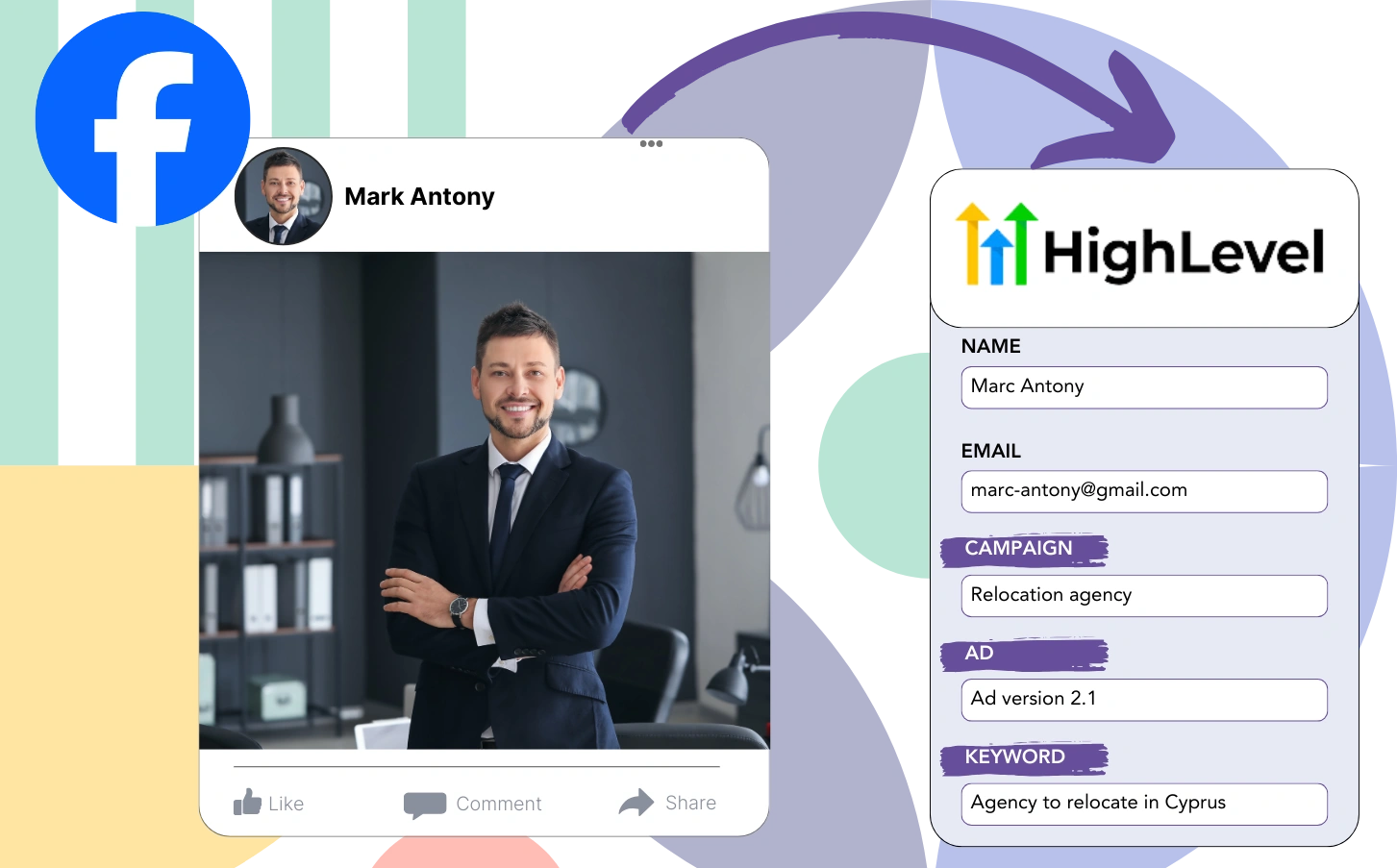Are you finding it difficult to determine which Facebook ads are driving your leads, sales, and revenue?
Although you understand how many leads are coming from each Facebook ad, the exact origin of each individual lead might still be unclear.
Understanding which ads are successful is essential for making the most of your marketing spend.
Leadsources provides the solution.
Leadsources helps analyze data from each Facebook ad (campaign, Ad Set, audience, ad).
You can use GoHighLevel to keep all your Facebook ads data organized, including campaign, Ad Set, audience, and ad information for each lead.
You can use reports like “Top audiences for lead generation” to determine which audiences to continue supporting or discontinue.
Let’s explore!
Capture Facebook ads in GoHighLevel
Step 1: Add Leadsources in the head tag of your website

Sign up to Leadsources.io, and benefit from our 14-day free trial.
To track leads, insert the Leadsources code into the head section of your website.
Simply follow this easy step-by-step guide.
Step 2: Add the UTM parameters to your Facebook ads campaigns

Add the UTM parameters into each component of your Facebook ads (campaign, ad set, audience, ad).
Example: Insert these UTM parameters into the links of your Facebook ads:
- UTM_source
- UTM_campaign
- UTM_term
- UTM_content
Understand that Leadsources provides lead source data, such as channel, landing page, and landing page subfolder, even in the absence of UTM parameters, for a thorough lead-level view.
Step 3: Add the hidden fields in GoHighLevel

Leadsources ensures that the hidden fields in your GoHighLevel are automatically filled with Facebook ads details such as campaign, ad set, audience, and ad upon submission.
Use our guide to add hidden fields in GoHighLevel and complete your configuration process.
Leadsources directly input Facebook ads data into your GoHighLevel (check Step 4).
Step 4: Capture the Facebook ads data in GoHighLevel

Facebook ads data, such as campaign, ad set, audience, and ad, is automatically collected by Leadsources when someone clicks on your ad and visits your website.
The hidden fields of your GoHighLevel are filled with Facebook ads data automatically through Leadsources.
When the form is submitted, GoHighLevel’s submissions page receives the Facebook ads data along with the form responses for each lead.
How does Leadsources work?
When the Leadsources tracking code is added to the head tag of your site, it captures Facebook ads data like campaign, ad set, audience, and ad every time someone lands on your site.
The hidden fields in your GoHighLevel hold the Facebook ads data after it is saved.
Leadsources will obtain the following visitor information:
- Channel
- Source
- Campaign
- Content
- Term
- Landing page
- Landing page subfolder
This enables tracking of essential lead source details even in the absence of UTM parameters, such as when traffic is from organic sources like:
- Google Search
- Instagram bio link
- Social media posts
- Etc.
Leadsources provides effective lead tracking even when UTM parameters are not used, unlike many other tracking tools.
Leadsources provides comprehensive lead data from every channel, in contrast to other tracking solutions:
- Organic Search
- Paid Search
- Organic Social
- Paid Social
- Referral
- Affiliate
- Display Advertising
- Direct Traffic
This helps simplify the process by consolidating all lead source data into one central place.
Pro tip:
Track Facebook Ads data in all the popular online form builders, including Cognito Forms, Gravity Forms, Jotform, Typeform, WPForms, and more. For all other form builders, refer to our guide on How to track Facebook Ads data in your online form.
How to run performance reports
Your Facebook ads data is available in GoHighLevel, so you can create performance reports including:
- Leads per campaign
- Leads per Ad set
- Leads per audience
- Leads per ad
- Etc.
This allows you to make well-informed decisions on how to spend your Facebook ads budget.
Here’s an overview of the different reports you can create.
Lead performance reports
Reports can indicate the volume of leads generated from:
- Channel
- Campaign
- Ad set
- Audience
- Ad
- Landing page
- Landing page subfolder
Example #1
Create a “Leads by Channel” report by exporting data from campaigns in SEO, PPC, and email.

Example #2
When you know which channel is the best performer, such as Facebook ads, you can track it to see the number of leads from each campaign.

Example #3
Once you find the campaign that leads in generating leads, you can look into which audience, ad set, or ad is producing these results.

Sales performance report
Identifying ads and audiences with high lead generation is valuable, but do they also improve revenue results?
By using a CRM such as GoHighLevel to import GoHighLevel data, you can generate detailed sales reports.
Example:
| Channels | Search Paid | Social Paid |
| Leads | 50 | 75 |
| Sales | 5 | 6 |
| Average order value | $150 | $100 |
| Revenue | $750 | $600 |
The analysis showed that Social Paid ads on Google and Facebook were more effective at generating leads compared to Search Paid ads.
Data over several weeks confirmed that the Search Paid channel produced more revenue with fewer leads than Social Paid, which led to increasing the Search Paid budget.
LeadSources tracks the source of each lead in GoHighLevel, whether they come from ads, organic search, social, email, etc. and syncs that data with each submission. See the full breakdown on the lead source in GoHighLevel page.

